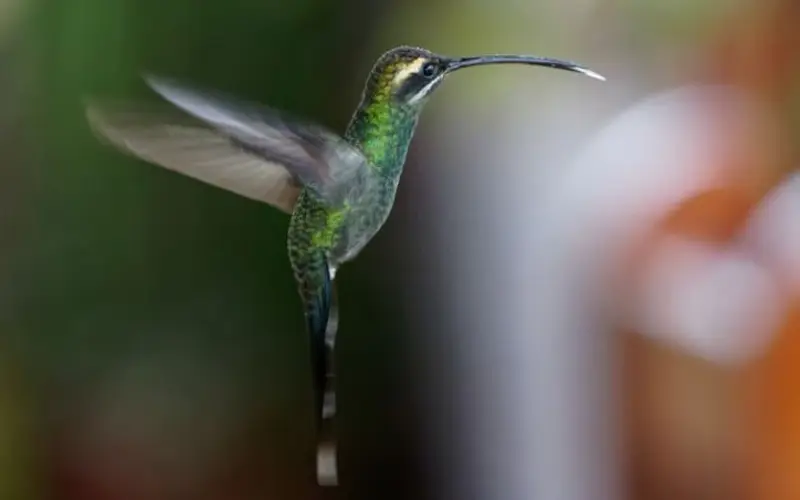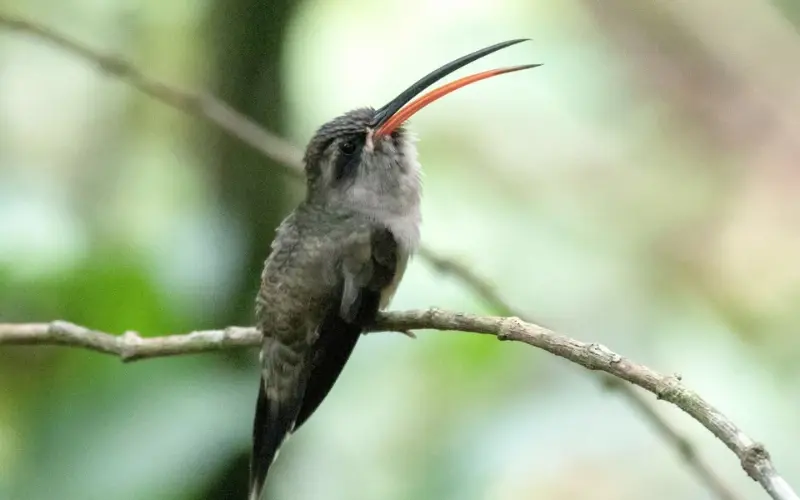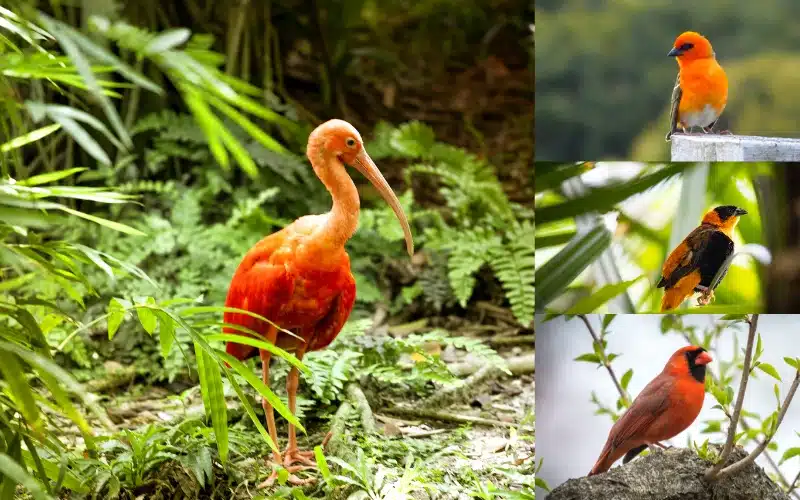The White-whiskered Hermit (Phaethornis yaruqui) is a species of bird hummingbird in the Trochilidae family. It is found in Colombia and Ecuador.
identification
A large, White-whiskered Hermit with an extremely long curved bill. Dark green overall with eyebrows and white mustache. Also, note the long graduated tail with a white tip. Common in lowlands and foothills, up to about 1,300 m. Also found within forests and other growth and gardens where it visits feeders. Stays low, zipping quickly around flower patches in the understory.
Description
The white-whiskered hermit is about 13 cm (5.1 in) long. Males weigh 4 to 7 grams (0.14 to 0.25 oz) and females weigh 4 to 6.5 grams (0.14 to 0.23 oz). This medium-sized hermit has a bronze crown and bluish-green upperparts. Its underparts are green to dark gray. The face has a black “mask” with a buffy supercilium and a white gular stripe. The bill of the male is almost straight. The female has a shorter and gently curved bill, shorter wings, grayer underparts, and a longer tail than the male.
Range and habitat
The white-whiskered hermit has a relatively wide distribution in the Amazon basin. Its range extends to parts of Colombia, Venezuela, Guyana, Brazil, Ecuador, Peru and Bolivia. This species is found at elevations up to 1,000 m, inhabiting the middle and understory of humid lowland rainforest. It especially frequents forest edges and clearings, where flowers and fruiting plants provide sources of nectar and insect food.
Food
Like other hermit hummingbird Varieties, white-whiskered hermits subsist on nectar, fruit, and small arthropods. It forages at all levels within the forest layer, from the high canopy to the understory. This species nests among favorite nectar plants along established paths. It pierces flowers with its specialized bill to drink nectar, sugar, and energy. Small insects are also collected from plants and flowers. Occasionally, the hermit sits down to hawk flying insects from the open. The fruit pulp is eaten for vitamins and minerals.
Attitude
The white-whiskered hermit is somewhat retiring but can be approachable. It aggressively guards nectar resources in its territory, chasing other hummingbirds. In the display, the male flies in wide vertical circles above the canopy, singing a clicking song. This hermit has a fast, circling flight and is quite agile, allowing it to hover in place and access flower essences. It builds a small cup nest on a low horizontal branch or tree fern frond, with the outside camouflaged with bits of moss and other debris.
Voicing
The white-whiskered hermit’s song is “a continuous series of rather harsh ‘cree-you’ notes”. It also gives a series of “searching” notes while wagging its tail at a low pitch.
condition
The IUCN has assessed the white-whiskered hermit as Least Concern although its population size is unknown and believed to be declining. But long-term survival clearly depends on habitat conservation.”
Cool Facts of White-whiskered Hermit
1. The genus name Phythornis refers to a mythical nephew of the Greek god Apollo who was transformed into a hummingbird.
2. Hermit hummingbirds get their name from their solitary behavior, unlike more social species of bird
3. The white-whiskered hermit can pump its tail feathers to produce a faint sound, possibly used for communication.
4. This species displays pirouette courtship, in which the male and female move together in a circle.
5. The white-whiskered hermit has a very fast metabolism and must feed frequently to meet its high energy needs.














